Researchers using Webb found that many distant galaxies have flattened oval disk and tube-like shapes, not spiral or elliptical structures. Webb h
Researchers using Webb found that many distant galaxies have flattened oval disk and tube-like shapes, not spiral or elliptical structures.
Webb has scanned the horizon and spotted distant galaxies shaped like volleyballs, frisbees, pool noodles, and surfboards. Researchers analyzing images from NASA’s James Webb Space Telescope have found that galaxies in the early universe are often flat and elongated
“Roughly 50 to 80% of the galaxies we studied appear to be flattened in two dimensions,” explained lead author Viraj Pandya, a NASA Hubble Fellow at Columbia University in New York. “Galaxies that look like pool noodles or surfboards seem to be very common in the early universe, which is surprising, since they are uncommon nearby”, reported NASA.
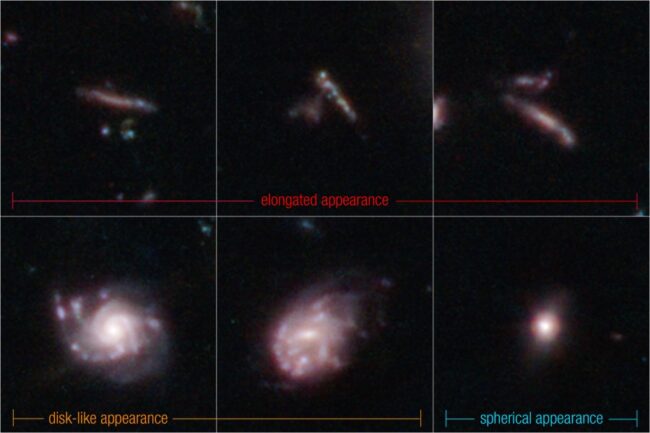
The team focused on a vast field of near-infrared images delivered by Webb, known as the Cosmic Evolution Early Release Science (CEERS) Survey, plucking out galaxies that are estimated to exist when the universe was 600 million to 6 billion years old.
While most distant galaxies look like surfboards and pool noodles, others are shaped like frisbees and volleyballs. The “volleyballs,” or sphere-shaped galaxies, appear the most compact type on the cosmic “ocean” and were also the least frequently identified, reported NASA.
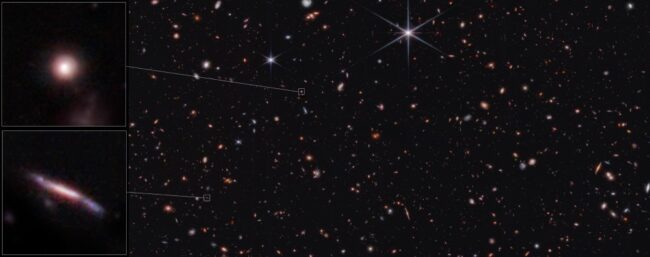
The frisbees were found to be as large as the surfboard- and pool noodle-shaped galaxies along the “horizon,” but become more common closer to “shore” in the nearby universe. (Compare them in this illustration.)
Which category would our Milky Way galaxy fall into if we were able to wind the clock back by billions of years? “Our best guess is that it might have appeared more like a surfboard,” said co-author Haowen Zhang, a PhD candidate at the University of Arizona in Tucson. This hypothesis is based partly on new evidence from Webb – theorists have “wound back the clock” to estimate the Milky Way’s mass billions of years ago, which correlates with shape at that time, reported NASA.
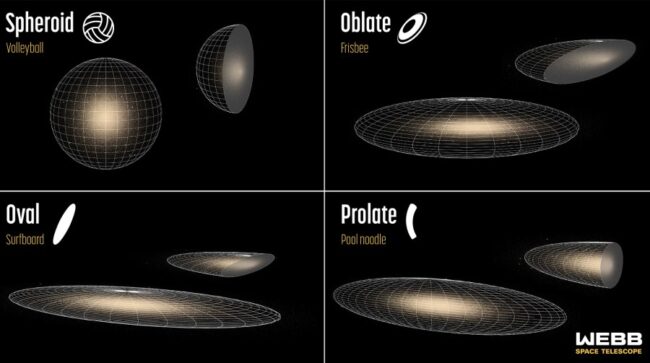
These distant galaxies are also far less massive than nearby spirals and ellipticals – they are precursors to more massive galaxies like our own. “In the early universe, galaxies had had far less time to grow,” said Kartheik Iyer, a co-author and NASA Hubble Fellow also at Columbia University.
Webb’s sensitivity, high-resolution images, and specialization in infrared light allowed the team to make quick work of characterizing many CEERS galaxies, and model their 3D geometries, reported NASA.
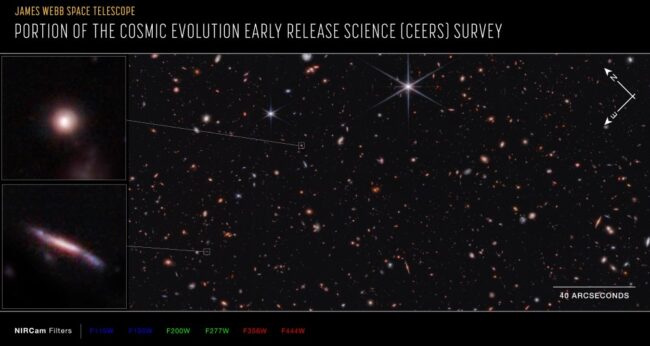
There are still gaps in our knowledge, researchers not only need an even larger sample size from Webb to further refine the properties and precise locations of distant galaxies, they will also need to spend ample time tweaking and updating their models to better reflect the precise geometries of distant galaxies.
“These are early results,” said co-author Elizabeth McGrath, an associate professor at Colby College in Waterville, Maine. “We need to delve more deeply into the data to figure out what’s going on, but we’re very excited about these early trends”, as reported by NASA

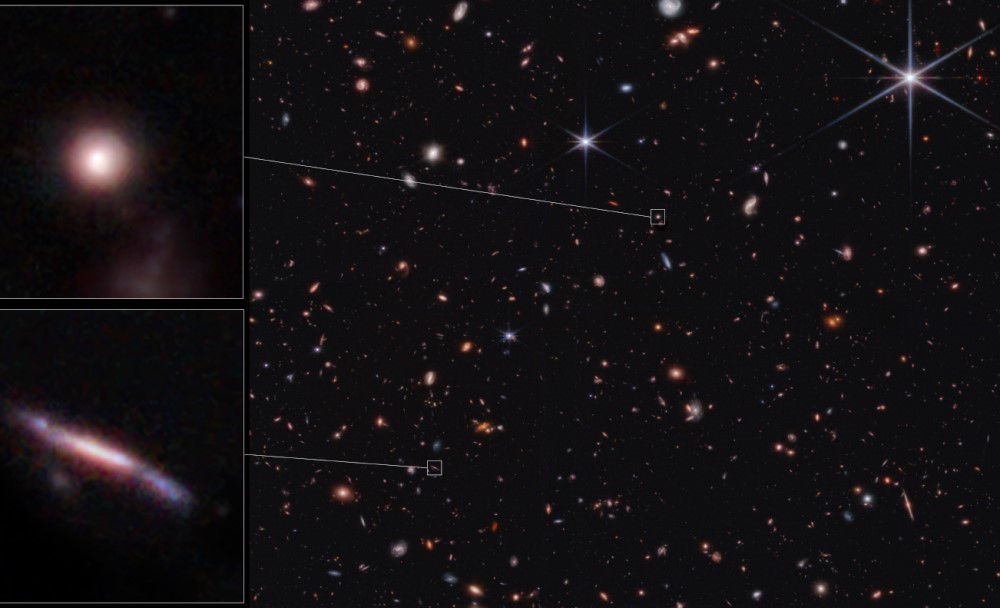
COMMENTS